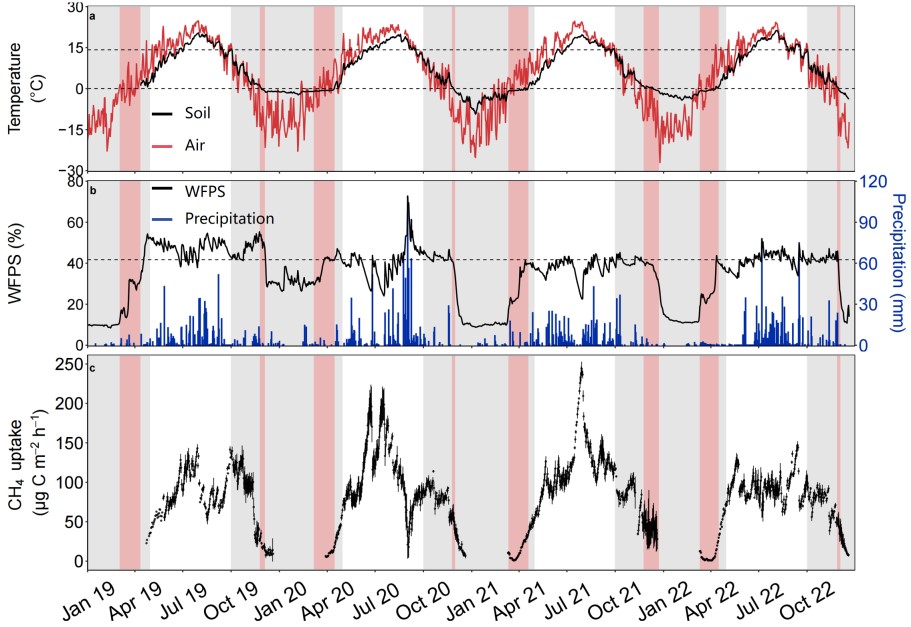2025-05-20 中国科学院 (CAS)

Face-on view of the Milky Way (from the north Galactic pole) showing the distribution of ammonia-observed sources matched with the Hi-GAL 360 catalog. Spiral arms are adapted from Reid et al. (2019). Marker sizes reflect ammonia column densities; arm associations are indicated by color. Red dashed circles mark the 2–8 kpc distance-limited sample. (Image by Serikbek Sailanbek)
<関連情報>
- https://english.cas.cn/newsroom/research_news/phys/202505/t20250521_1044166.shtml
- https://academic.oup.com/mnras/article/539/4/2987/8107902
南山26m望遠鏡によるBGPS天体のアンモニア調査 Ammonia survey of the BGPS sources with the Nanshan 26-m telescope
Serikbek Sailanbek , Jarken Esimbek , C Henkel , Andrey M Sobolev , Dmitry A Ladeyschikov , Dilda Berdikhan , Gang Wu , Jianjun Zhou , Xindi Tang , Yuxin He, …
Monthly Notices of the Royal Astronomical Society Published:07 April 2025
DOI:https://doi.org/10.1093/mnras/staf564
ABSTRACT
We conducted an ammonia survey targeting 217 sources from the Bolocam Galactic Plane Survey v1.0 using the Nanshan 26-m radio telescope, focusing on the NH3(1,1) and (2,2) lines, selecting sources based on the criteria that their 1.1 mm fluxes are greater than 5 Jy and that they are observable with the Nanshan 26-m radio telescope at the Xinjiang Astronomical Observatory. We successfully detected 188 (86.6 per cent) of our sources. These sources span a galactic longitude range of 1.2∘–192.6∘ and reside in the local, Perseus, Saggitarius–Carina, Scutum–Centaurus, and Norma spiral arms and between them. Among them, 185 sources exhibit NH3 (1,1) and (2,2) inversion lines, all showing well-defined structural characteristics. Total NH3 column densities vary from 0.12 × 1015 to 15 × 1015 cm−2, with para-NH3 fractional abundances averaging 1.8 × 10−7. This study concludes that 82 per cent of our observed sources exhibit star formation activity, evidenced by 22 GHz water maser emission, and 52 per cent are identified as high-mass star formation regions through 6.7 GHz Class II methanol maser detections. Turbulence, reflected in non-thermal velocity dispersion, correlates positively with kinetic temperature, influencing cloud evolution and star formation. These results emphasize the role of turbulence in star formation processes and maser emission as their indicator. We also find a weak negative trend between ammonia column density and galactocentric distance with the 2σ significance, potentially linked to Galactic isotope ratio and gas density gradients.



